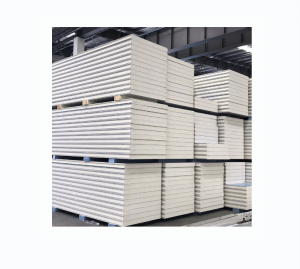Abstract: EPS is a new type of construction engineering building decoration material,...
1. What is EPS board
EPS is a new type of building decoration material for construction engineering. EPS board (also known as benzene board) is the abbreviation of expandable polystyrene board. The polystyrene foam board with closed-cell structure, which is prepared by heating and pre-foaming expandable polystyrene beads and then heating and forming in a mold, is lighter in weight. It is made of raw materials through pre-expansion, curing, molding, drying and cutting. It can be made into foam products of different densities and shapes, as well as foam boards of various thicknesses. Widely used in construction, thermal insulation, packaging, refrigeration, daily necessities, industrial casting and other fields. It can also be used in the manufacture of exhibition venues, merchandise cabinets, advertising signs and toys. In order to meet the national building energy-saving requirements, it is mainly used for external thermal insulation of external walls, internal thermal insulation of external walls, and floor heating.

2. The advantages of EPS board
It is not easy to be damaged due to changes in ambient temperature, and is resistant to low temperature, high temperature, and heat preservation;
It not only avoids many difficult and complicated manufacturing processes such as traditional wall engineering projects, architectural planning, design, decoration design, prefabricated components, prefabricated component installation, interior corner joints, high-altitude transportation, etc., but also greatly reduces the negative impact. The climbing operation solves many problems such as cold and deformation of the prefabricated components after the wall is installed. This saves a lot of installation labor and cost for the project, and improves the installation work. Safety factor. The EPS board is connected and fixed by the main engineering steel structure and the embedded building steel. If the wire frame is cracked due to the decoration design of the embedded architectural steel design scheme, it is likely to cause the wire frame to crack.
Due to the unique construction materials and operating procedures of EPS panels, time and effort can be saved for one-man operating procedures. For very large prefabricated elements, prefabricated elements can also be installed, solving the expected goal of thermal insulation.
In the part where the EPS board is to be installed, according to the engineering drawing of the construction project, the border line or center line of the dialog box will pop up. The general models and specifications of EPS boards are standard sizes. The engineering drawings should follow the models and specifications of fiber lines and fiber laser cutting as much as possible. Consider gaps made by patchwork. When pasting the EPS board, pay attention to using alkali-resistant plaid when turning the bag. If there are special circumstances, it can be pasted immediately without turning the bag. It should also be noted that the chromatographic full-stick method should be used when pasting, and a good adhesive must be used. When wet, squeeze firmly to avoid unnecessary adhesive spillage. Pay attention to the specification and model of the glue seam, and keep the natural environment on the surface of the eps wire-frame clean and tidy.
Secondly, for the installation of super-large EPS panels, during the construction process of the construction project, it is necessary to fully prepare the fixed brackets that will not change in the short term. If you're trying to piece together wire-frames throughout the installation, you should prepare ahead of time. It is best to put together the perspective and model specifications of the wire-frame, and try to put it together before installation to see if it can be put together well, otherwise it will be very inconvenient to change it after it is built.
After the splicing is completed, check whether the gap is properly resolved, and the wireframe should be leveled as a whole. After drying, check the seams for excess mortar mix and smooth it out with sandpaper if any. The splicing gap can be treated with special glue for anti-cracking fiber in one step.


